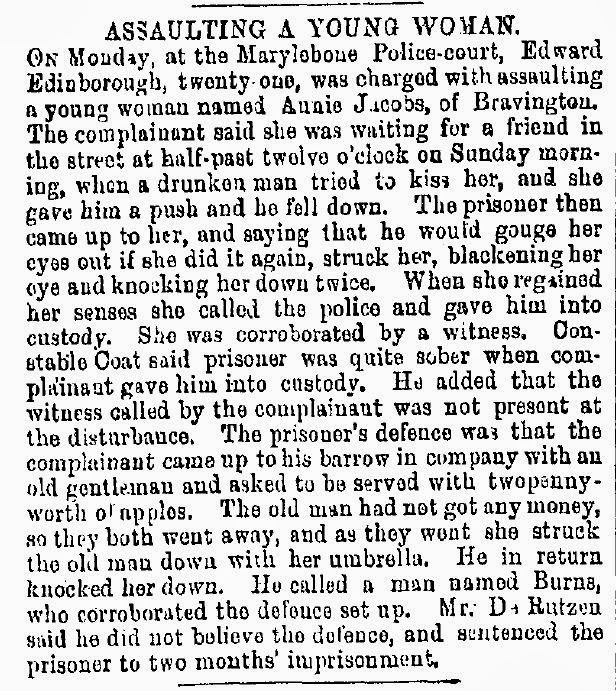The religious faith of Edenboroughs
in the United Kingdom were, in the main, of the Established Church (Church of
England) so it was of great interest to find a record of one Edenborough
appearing to be of the Quaker faith.
The above photo, “Clawson. John
Edenborah buryed ye 11th: 10th mo: 1716”, is taken from RG6/1397 – General
Register Office: Society of Friends’ Registers, Notes and Certificates of
Births, Marriages and Burials; Warwickshire, Leicestershire and Rutland –
Monthly Meeting of Leicester, Old Dalby.
Among the large number of religious denominations that emerged during the
early-to-mid-17th century in England was the Seekers. And while
Leicestershire-born George Fox has been considered the founder and leader of
the Religious Society of Friends (Quakers), the Seekers are best thought of as the forerunner of the
Quakers, with whom many of them subsequently merged.
George Fox’s journal attributes the name “Quaker” to a judge in 1650
calling them Quakers “because I bid them tremble before the Lord”. Quakerism
gained a considerable following in England and Wales during and after the
English Civil War (1642-1651) increasing to a peak of 60,000 by 1680.
By 1657, a Friends’ meeting had been settled
at Long Clawson and in 1673 a cottage and close for a meeting house and
burial ground had been secured.
Fox’s movement ran afoul
of Oliver Cromwell's Puritan government, as well as that of Charles II, when
the monarchy was restored because Fox’s followers refused to pay tithes to the
state church, would not take oaths in court, declined to doff their hats to
those in power, and refused to serve in combat during war.
The 1753 published book,
A Collection of the Sufferings of the
people called Quakers, by Joseph Besse, reports on the hundreds of atrocious
accounts forced upon the non-conformist society. Just one such example at Long
Clawson being:
So just who was this
John Edenborah buried at Long Clawson?
Quakers used plain language and dating
practices to avoid using the names of months derived from heathen gods and
goddesses so that “ye 11th: 10th mo: 1716”, translates to the 11th of December 1716.
I’m pretty sure that this John Edenborah is the same person as John Edenburrow
of Hose, Leicestershire, who left a will dated 15 December 1716.
|
In the name of God Amen I John
Edenburrow
of Hose in the County of Leicester
Webster
being of infirm health of body but of a
good
and perfect memory (praised be God) do make
this
my last will and testimony hereby revoking
all
former wills by me heretofore made in manner
and
form following (that is to say)
I
give unto my loving sister Ann Burton twenty
shillings
which my executors hereafter mentioned shall
pay
within six months after my decease and as for
all
the rest and remainder of my goods and chattels
of
what kind soever it be which I shall be possessed
of
at the time of my death after my debts
legacies
and other expenses are discharged I do
give
unto my loving wife and son Charles and do
make
them sole executors of this my last will and
testament
in witness whereof I have hereunto put
my
hand and seal this sixth day of December in
the
second year of the reign of our sovereign Lord
George
by the grace of God of Great Britain France
and
Ireland king defender of the faith etc Anon
Domini
1716
|
Although I have no proof at present, he may also be the Jno Edinborow of Hose who in 1683 gave a Quaker Intent of Marriage to Mary Blake of Harby. This would also tie in with the son Charles mentioned in the above will and I have a record of a Charles Edenborough born approximately 1686 in Hose, Leicestershire. My records show, though, that Charles practised the faith of the Established Church. So was John a one-off? Perhaps acquiescing to a Quaker wife?





























